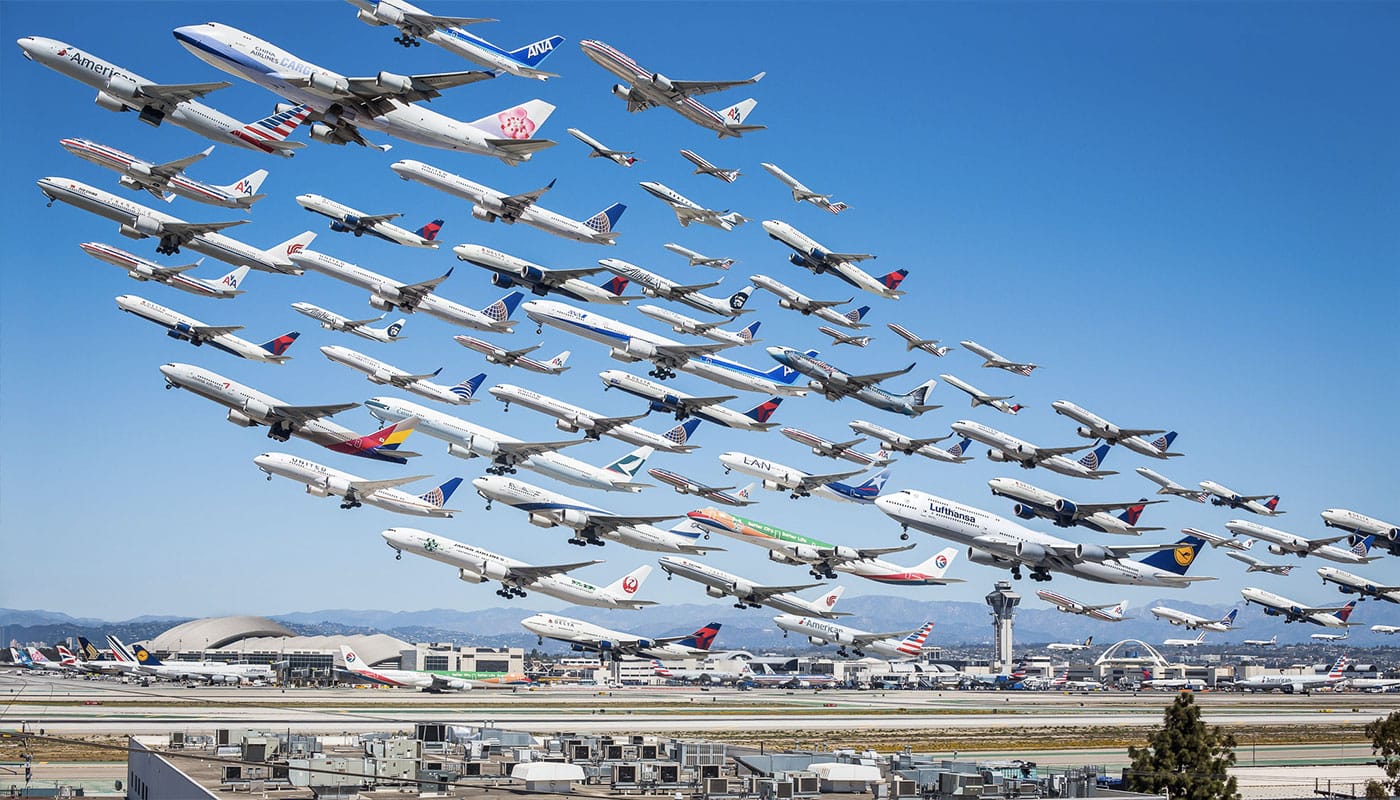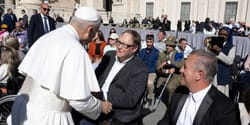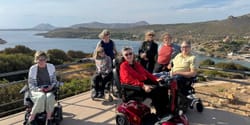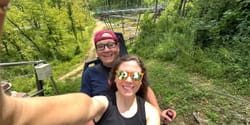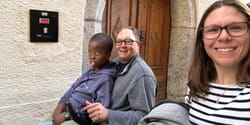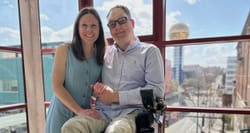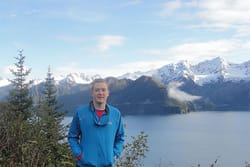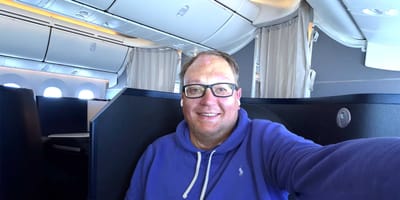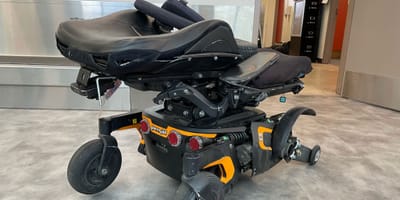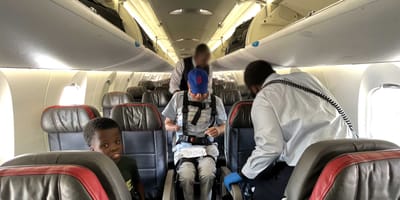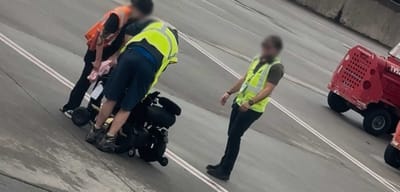Editor’s Note: I am frequently asked about the possibility of sitting in a personal wheelchair on an aircraft and during flight. Unfortunately, there are no wheelchair securement spaces on airplanes, largely because of safety concerns. Michele Erwin has started a project that she hopes will bring wheelchair users the ability to remain in their own specialized wheelchairs during flight. Read more about her work in this guest post.
I created All Wheels Up in 2011, after recognizing a hole left by the Air Carrier Access Act (ACAA) and the Americans with Disabilities Act (ADA). While there are many great organizations and people advocating for greater access to the friendly skies, the fact remains that planes are not truly accessible. All Wheels Up is thinking outside the proverbial box and is seeking out new solutions for travelers with disabilities and the people who rely on wheelchairs for safe transportation and seating.
All Wheels Up is working to crash test wheelchairs for commercial flight, and we are the only organization doing so. The project is multi-faceted and there are many other organizations involved. We understand that, even though the solution is simple, cutting through the red tape will ultimately be the biggest hurdle. There are many who say it cannot be done, but we work every day to make it achievable. Our goal is that, within thirty years from now, rolling down a jet way and having your power wheelchair locked down in an airplane – just as one would do in a van, bus or train – is the status quo.
2011-2012 was a time of research, and we found both compelling and some devastating information. The most compelling information so far comes from a report published by Q’straint, the largest wheelchair securement company in the world. They had just conducted crash tests of their WTORS at 20G. This surpasses the 16G sled testing that the airlines have established as a guideline for airplane seats. This ended up becoming our foundation of purpose. A surprising bit information was the first “Air Force One” built for President Roosevelt was wheelchair accessible, because the world’s most powerful man utilized a wheelchair.
The most disappointing report came from the FAA. The FAA report 7.2 Medical Criteira for transportation of patients by air ambulance states: “Quadriplegics will prefer cabin wall seating as providing more support on one side.” I know that for most who experience severe hypotonia from quadropliegia or neuromuscular illness, the airplane wall does not provide enough support for safe seating, especially during takeoff and landing. The wall/window of the plane is oftentimes three seats from the aisle, which is a difficult transfer for those with reduced mobility. This statement, in an official government report, shows the lack of attention to detail that has been given to the safety and comfort of air travelers with disabilities.
All Wheels Up was not started with the notion that “It is not fair” or “wouldn’t it be nice.” We are also not here to fight any legal battles. I am committed to bringing a sense of understanding to the aviation community — if they are willing to think outside of the current model, it can improve safety access for people with disabilities – surely a lucrative business model.
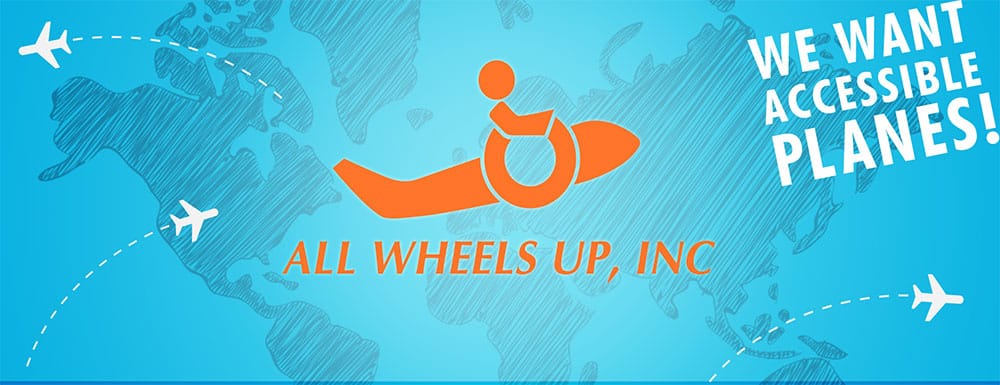
When we started in 2011 it took over one month for someone to even engage in a conversation at the FAA. There were many hang-ups and some “receptionists” even told me that there was nothing that could be done. I pressed on, asking if they really saw flight maintaining the unacceptable status quo of inaccessibility, even 30 years from now. My comments must have resonated, because I was ultimately put through to the R&D department at the FAA. I was surprised to learn, I was the first person/organization to ask the FAA to crash test a wheelchair for commercial flight. After many thoughtful conversations, the FAA did say they thought the project was viable, but funding to start the project was stonewalled from the inside. They said I needed to approach the airlines and congress to get congress to earmark some of the the existing R&D funds for this project. I do believe that congress and the airlines are large elephants that cannot be moved unless we give them some incentive. All Wheels Up, then, is a project designed to show proof of concept.
All Wheels Up has merged with the Accessible Airlines Facebook group, organized by Alan Chaulet and Dennis VanPloeg, and we have taken Vickie Journey-Trainor into the fold. The guys from Accessible Airlines group gave us a great following and a person on the ground working on our efforts in the European Union. Vicki wrote a compelling and successful petition that calls on Congress to make air carriers accessible.
2015 has truly been a breakout year for All Wheels Up. We have successfully raised enough capital to conduct our first crash test. We have a non-compete contract with Q’straint, who in return will be suppling all the restraints for the crash tests going forward. In addition we are working with Calspan, a private, FAA approved crash test facility who believes in the project and is taking on the huge responsibility with us to start working on the blueprints of the first ever standards of crash testing a wheelchair for commercial flight. The Rehabilitation Engineering and Assistive Technology Soceity of North America (RESNA), who write the standards for wheelchair transportation safety, has not agreed to sign on for any funding opportunities, but they are following our project closely and AWU has been invited to speak at their next conference regarding the project.
The next steps for All Wheels Up will be to put all of our hard work and efforts into action. The crash test will be conducted this year, in 2016. The results of this test will be distributed to every major air carrier around the world, every wheelchair governmental safety group, including the NIH, and the FAA and its counterparts around the world. The end goal is to give people the ability to sit in their power wheelchairs inside the aircraft cabin. This will open air travel to those who cannot safely transfer and cannot safely sit in an airplane seat.
So while 2016 gears up to be a very busy year, we still need everyone’s help. If you are interested in this effort to open air travel to everyone, please sign our petition and read more about our project at www.allwheelsup.org. You can also keep up with our progress on Facebook and Twitter.
Michele Erwin has a successful career in the Fashion Industry, having worked for notable fashion houses, such as Ralph Lauren and Calvin Klein. After her son was diagnosed with SMA (Spinal Muscular Atrophy) and experiencing the difficulties of traveling with a wheelchair, she knew something needed to be done. Taking her business acumen and passion for projects she embarked on the journey of getting wheelchairs crash tested for commercial flight and created All Wheels Up.


